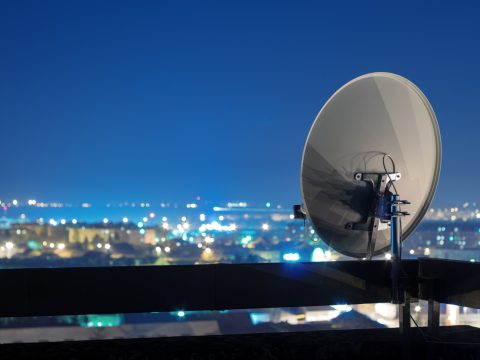Can Anybody Hear Me? What Is RF Testing and Why It Matters

Slotted Array Antennas: Your Guide to the Top Benefits
August 22, 2019
5 Things You Need to Consider When Choosing a New RF Antenna
August 22, 2019As the world of technology expands, human capability also increases exponentially. With the ability to communicate quickly and the ability to transmit information and images over huge distances, humans can do more than ever. The technology that allows us to do these things is complex and intricate, but almost always relies on one thing: RF.
Invisible to the human eye, our electronics use RF to communicate with each other and lets us send information over huge distances. These radio frequencies allow us to do amazing things, but they can also cause problems. This is why RF resting is so important to modern living.
If you find yourself wondering, “What is RF and why is RF testing important?”, don’t worry, we’ll cover everything related to RF and RF testing in this article.
RF: The Basics
To understand why RF testing is so important to our modern world, you have to understand the basics of RF. RF stands for “radiofrequency“. When an RF gets applied to an antenna, the antenna generates an electromagnetic field that sends electromagnetic waves through space. Electronics and other devices use these electromagnetic fields to communicate with each other.
Different frequencies generate different electromagnetic fields of various strengths. These different frequencies make up the electromagnetic radiation spectrum. These electromagnetic waves travel at the speed of light, which means devices can communicate with each other almost simultaneously.
Electric Fields and Magnetic Fields
RF fields are both an electric field and a magnetic field. Both of these fields are calculated using different measurements. The strength of the electric field generated by an electromagnetic field is measured in volts per meter. This measurement is written as V/m. The strength of the magnetic field is measured in amperes per meter, or A/m.
These electric fields are caused by differences in voltage. An electric field is created as long as there is voltage present. Electric currents do not even need to be present for an electric field to be generated. Regardless of the current, if an electric charge is present, there will be an electric field.
However, magnetic fields get created when an electric current is present. The strength of the magnetic field is completely dependent on the strength of the electric current. The stronger the electric current, the stronger the magnetic field is.
Wavelengths and Frequencies
The interesting thing about RF is that it is both a wavelength and a frequency. The wavelength of an RF is the distance covered by a complete cycle of the electromagnetic wave. The frequency of an RF is the number of waves passing a point in a given unit of time.
Wavelengths and frequencies are directly correlated to each other. Frequencies with longer wavelengths have a lower frequency. This produces signals that aren’t as strong. Frequencies with shorter wavelengths have a higher frequency, which produces much stronger signals.
These frequencies are usually measured using the number of complete cycles in one second. For example, one cycle in one second is expressed in Hertz or Hz. As the complete number of cycles in a second increase, the unit used to measure the changes.
For example, one thousand complete cycles in a second are a kilohertz or kHz. A million complete cycles in one-second are a megahertz or MHz. And a billion complete cycles in a one-second are a gigahertz or GHz.
Electronic devices use these different frequencies to communicate and only respond to certain frequencies. For example, one device might communicate with other devices on a 10 kHz frequency, while others might communicate using a 2 GHz frequency.
While modern electronic devices are capable of recognizing a wide range of frequencies, most RF frequencies used are between 3 kHz and 3 GHz.
What Is RF Testing?
Our modern world is filled with devices that use RF to communicate. Whether it’s your cellphone, computer, or even your TV remote, they all use RF to communicate with other devices. Although they use different frequencies to communicate with other devices, each device is generating an electromagnetic field.
If these electromagnetic fields aren’t properly tuned, they can interfere with the operation of other devices. This can cause these devices to malfunction or can even destroy them.
This is the same concept behind an electromagnetic pulse or EMP. This extremely powerful electromagnetic field can cause electronic devices to short-circuit. It can also interfere with the communication between them.
This is why RF testing is so valuable. It ensures that these electronic devices can operate reliably while in the presence of other frequencies and signals.
RF Emission and RF Immunity Testing
RF testing is the process of testing new electronic devices for RF emissions and RF immunity. For RF emissions testing, the electronic device is placed in an area where there is little to no electromagnetic interference. The device is monitored for any type of electromagnetic emissions that might interfere with the operation of other devices.
When it comes to testing for RF immunity, the device is placed in an area that has electromagnetic interference. The level of electromagnetic interference depends on the level of interference the device will experience in day-to-day operation.
The device is then tested to see how it tolerates the electromagnetic interference.
RF Testing Builds Toward a Better Future
Now that we’ve answered the questions, “What is RF testing and why is it important?”, you can take steps to make sure your electronic devices are RF tested.
If you have any more questions about RF testing or antenna use, please visit our blog.




